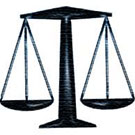It is : It is
In my highest level writing class as a senior Undergraduate English nerd and future scholar, there is a mixture of undergraduate and graduate students. We dove into a complex novel. It is about space and time. It is about style, structure, and syntax.
“What’s the tone?” my professor asks. We all take a few seconds. This is not one of those English classes in which blurts such as “Sad.” or “Angry!” or even “Indifferent…” suffice.
After a few well-thought-out adverbs and adjectives are agreed upon, one hand rose slowly and fearlessly, “It’s like: it is what it is.”
We all looked at our professor for reactionary guidance. He leaned back in his chair, belly protruding, and his cheeks flushed. He roared with laughter and absolute delight.
For the next hour we talked about that phrase, “it is what it is,” and its brilliance. And for a week since, I can’t stop thinking about it. My professor explained his initial disdain for the expression. He said he used to hate it, that it meant nothing and that one might as well not even say it. “If someone said it, I automatically hated him! I felt like it added nothing to the conversation. But…” He took two long strides to the board and wrote:
It is what it is
It is = It is
This launched us into full-blown discussion and pathological unpacking; this is when my obsession began.
The expression paints a place and its tone is decided by your, his, her, our, or their relationship with the “it.” Initially I had decided it was somewhere between acceptance and resignation—an argument against someone dubbing it as an expression used to comfort. “It is what it is” moves in a circle. It is a point, a position. “Is” is the agency. It is the only way to express, through words, that location in life. After a particular experience or encounter, this may be the only way to convey where you are, wholly. You are left with the “it,” the noun, and the next move is up to you. The expression is a stagnant circle, reoccurring. It is what it is what it is what it is. Stop. That is what it is. Now using your “is” moves the tone and the relationship of the protagonist (meaning you) to the “it.” Choosing to stay in the “it is what it is” is another option. It is a loop. I think this is what that seemingly simpleton but secret genius student was trying to express. The tone was caught in the loop. The voice was a record replaying, “it is what it is,” but through complexly mapped narrative.
“It is what it is” is sort of, superhuman. It exists in a place outside of language. As I take a study break outside my University catching strands of passing conversations, I hear it: “Like, I mean, it’s like, it is what it is, you know?” I giggle with delight. Maybe she was talking about the drunken hook up the night before that didn’t call her, or her experience as a woman in the kyriarchal and intersectional matrix of domination created by institutionalized religion in he United States; but either way she has knowingly or unknowingly defied language and defined space, planting a pin in the map of her entire existence. “It is what it is” is a place. “It is what it is” is a plot. “It is what it is” is potential. Now, make your move.


0 Comments:
Post a Comment
Subscribe to Post Comments [Atom]
<< Home